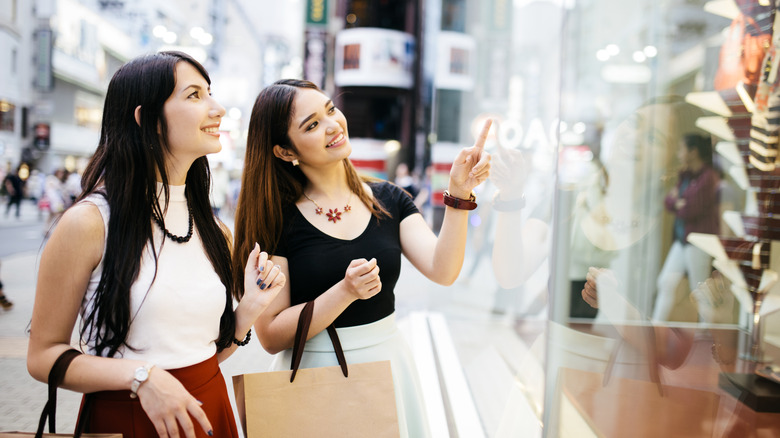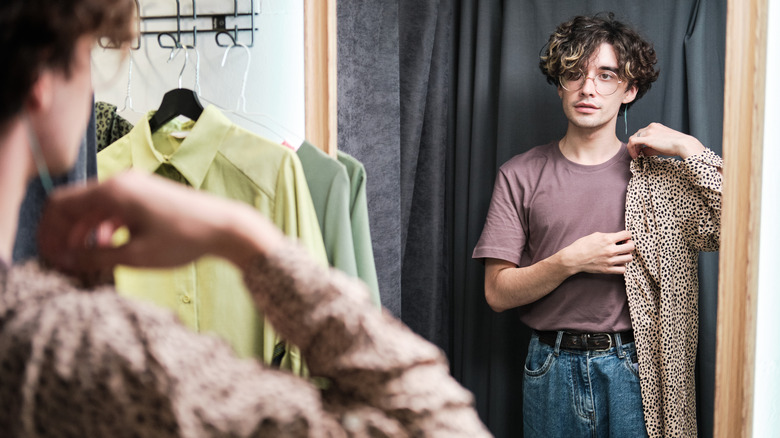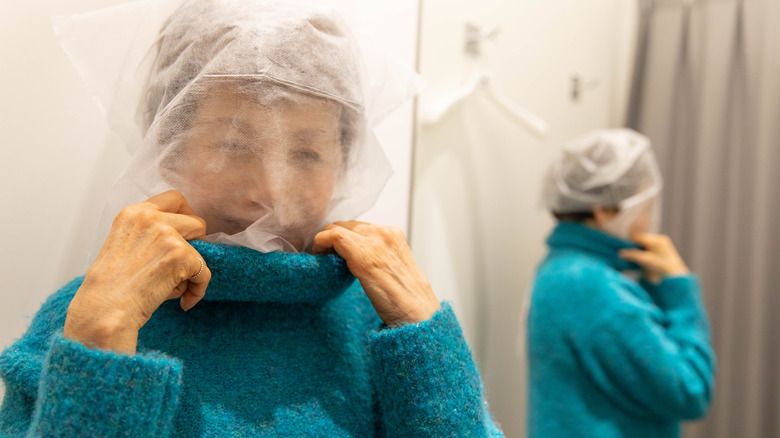The Unexpected Changing Room Custom Tourists Should Know Before Shopping In Japan
When shopping in Japan, disappointing one-size clothes aren't the only thing to watch out for. It's also important to keep local customs in mind when hitting the dressing rooms. As in many other countries, most clothing stores in Japan offer changing rooms to try on your fashion finds, but one rule sets them apart: You might have to be barefoot before entering.
Just like the Japanese practice of removing shoes before entering one's home, many stores require customers to take off their footwear before stepping into a fitting room. This keeps your socks and feet dirt-free while also protecting the shop's clothing. If you'd like to try your garments with your shoes on, all you have to do is step outside your changing room and slip back into your footwear. You'll often find a mirror nearby to check your fit. You may also spot a pair of sample heels, which are intended for customers to borrow while trying on pants and skirts.
With all this in mind, be sure to come prepared when shopping for clothes in Japan. Pack a pair of socks if you're wearing sandals and don't wish to be completely barefoot in the changing rooms. More importantly, wear shoes that are easy to slip on and off if you plan to try on a lot of clothes.
How to know when to remove your shoes
If you're unsure which clothing stores in Japan require you to remove your shoes in the changing rooms, the easiest way to clear up any confusion is to ask an employee. However, there are a few other hints to look for. The most straightforward of these is signage on the wall or dressing room floor. Keep an eye out for a placard letting you know you'll need to take off your footwear before entering the fitting room.
If you don't see a sign or poster, take note of the floor design. A carpet or raised platform in the fitting room is usually an indication that you should be shoe-free. In these instances, remove your footwear at the entrance of the room before stepping onto the carpet or raised floor.
Additionally, the type of clothing store you're shopping in matters. International brands, like H&M and Zara, generally don't require you to remove your shoes. However, Japanese retailers — like some of those on our list of the best clothing brands to buy while you're in Japan — typically stick to tradition and enforce the shoes-off rule.
Be prepared to wear a face covering
Another dressing room rule to follow if you want to be a considerate tourist when visiting Japan is donning a face cover. No, you don't have to arrive at Japanese clothing stores with a ski mask. Rather, keep your eyes peeled for semi-sheer disposable face shields provided in the fitting rooms (or, depending on the store, handed out by the fitting room attendants).
These coverings are meant for customers wearing makeup and are used to prevent stains and smudges on the garments. They slide easily over the head, with the long side covering the face. If you're trying on tops or dresses, make sure to wear the face shield when putting on and taking off the garments. Be aware that it might slightly muss up your hair, so consider bringing a comb or smoothing product to get your mane back in shape. Once you're done, throw the used covering away in the fitting room waste bins, if provided, or give it to a staff member, who will dispose of it for you.


